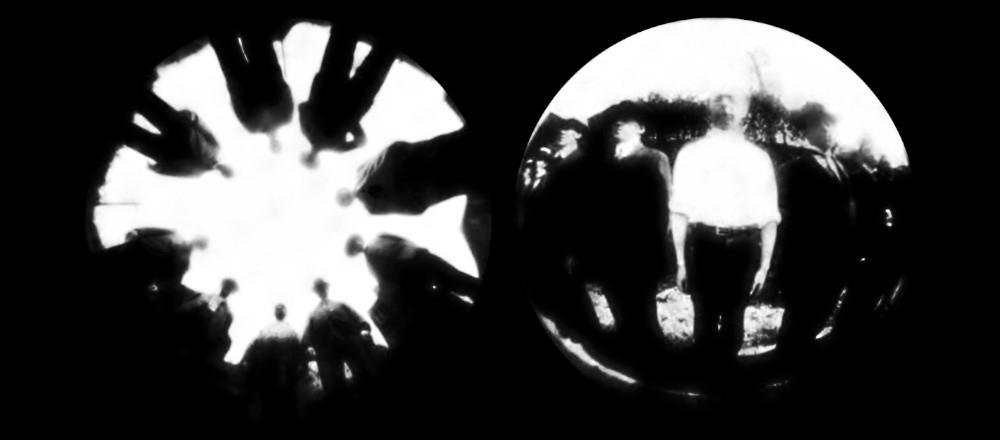
A brief history of the 360-degree cameras
Brands like Insta360, GoPro or Ricoh, have ruled the 360 camera market in recent years, but omnidirectional cameras have a longer background
360-degree cameras and 3D cameras are specially trendy now, thanks to their close synergy with the virtual reality. However, their history go back more than a century ago. This article is a enumeration of some of the most iconic omnidirectional camera models, without getting into deep technical details.
The term field of view (FOV) in photography refers to the size of the observable environment captured by a camera, as well as the angle that defines it. This is determined by two main factors: sensor size and lens. The angle of view of the human eye is around 180 degrees, while it is usually much narrower for regular cameras, around 45 degrees. The range between 60 and 80 degrees is considered wide angle, and anything above the 80 degrees is defined as ultra-wide angle.
Fisheye



Fisheye lenses reach the 180 degrees angle of view, a complete hemisphere. Instead of producing regular rectilinear images, this type of lens employs a different mapping function, resulting in a distinctive convex appearance. Simply put, a fisheye lens is similar to the peephole that we all have on our front doors.
They were given the name of Fisheye by Robert W. Wood in 1906, based on the wide underwater range of vision of a fish caused by the Snell's window effect. Wood's prototype was improved in the 1920s by the Hill Sky Lens, primarily used as a whole sky camera for atmospheric observation and meteorological purposes.
Further improvements were made by AEG and Nikon between 1930s and 1960s, with models like the AEG Weitwinkelobjektiv - wide-angle lens -, the Fisheye Nikkor, the Nikon Fisheye Camera or the Sphaerogon. Their usage remained basically for sky observation. After the 60s, the most significant innovations were made by Nikon and other Japanese companies like Pentax and Minolta, setting the foundations of the Fisheye lenses used nowadays.
Dual Fisheye

The simplest approach to achieve a 360-degree field of view is a combination of two opposite fisheye lenses. The resulting 2 images have to be stitched as seamlessly as possible. Correct calibration and stitching is essential to obtain high quality 360 images ready for immersive purposes.
Stitching and blending require complex image processing software, which has been optimised to be integrated in modern digital cameras. The light conditions can be different for both lenses, one of them could be facing the sun and the other one opposite to it, which means a major challenge to the digital processing. Stabilization is also critical for video cameras, especially for high frame rates.
The resulting image is arranged with specific mapping projections. The spherical or equirectangular projection is the most commonly used. This is also referred to as geographic projection because it is frequently used in world maps.
Multi-lens



Image quality can be improved and stitching issues reduced by increasing the number of lenses, but it also complicates the software processing. Since 2005, Google Street View, the Google Maps complementary project, became the biggest catalyst of the immersive photography and the stitching algorithms. They integrated multiple high quality cameras in a circular display, installed on the top of a vehicle, and drove through the streets of the whole planet.
These are some of the most paradigmatic cameras used by Google for this world-wide mapping project:
- Dodeca 2360: made by Immersive Media. 11 lenses distributed in a dodecahedron shaped case.
- Ladybug2: manufactured by Point Grey Research – now renamed to FLIR –. The iconic red camera, capable of recording 30 fps video, composed of 5 horizontally distributed lenses, and one more on top.
- R series: developed by Google itself. R2, R5 and R7, with diverse number of lenses and sensors, but based on similar concepts.
- 2017 model: Google's engineers reduced its size enough to make it compatible with trekking equipment
Also worth mentioning the famous Panono camera, which was a pioneer of the late generation 360 cameras in 2011. This ball camera is composed of 36 cameras spherically arranged, protected with a hard plastic case. Panono is meant to be thrown into the air, in order to capture photos from a high position.
Modern Dual fisheye cameras



In tandem with the evolution of the digital cameras, the expansion of the smartphones and the crucial impulse of Google Street View, there has been a great progression of the omnidirectional photo/video cameras in their basic form, the dual fisheye. Their simplicity have allowed vendors to reduce its size, weight and price, making dual fisheye models the best choice for average consumer, action camera users and content creators.
These are some of the smartphone-compatible cameras that have decisively contributed to the popularity of this technology in recent years:
- Samsung Gear360: released in 2017, it was the most important attempt of the top Android smartphone manufacturer into the 360 cam market.
- LG 360 CAM: the inexpensive camera implemented by the Korean company back in 2016.
- Nikon KeyMission 360: the device with which one of the brands involved in the development of the original fisheye lenses attempted – and fail – their comeback into the flourishing 360 camera market.
- Huawei CV60: an ultra-budget camera for Android smartphones.
The Japanese multinational Ricoh, founded in 1936 in Tokyo, has taken a leading role in the 360-degree camera market with their Ricoh Theta. Although high quality regular DSLR cameras are still preferred for real-estate virtual tour creation, the Theta series have entered this industry due to their excellent photo quality. They have enabled an alternative way to make virtual tours in a much faster and cheap way.
However, the Theta cameras are somewhat expensive for the casual consumer and too fragile to be used as an action camera. The most popular action camera manufacturer, GoPro, has also entered the promising 360 video camera market with their GoPro Fusion and GoPro Max, water-proof and optimised for video recording outdoors.
Insta360



In terms of omnidirectional cameras for both casual and professional consumers, Insta360 is currently dominating the market with their ONE series. Insta360 is the commercial name of Arashi Vision Inc., a Chinese company based in Shenzhen, founded in 2015 by JK Liu. His initial motivation was to provide cameras for live streaming of indoor events, but Insta360 soon identified the unsatisfied need for affordable action 360 camera. This is the origin of the Insta360 Air and Insta360 ONE.
Because of their versatility, compact size, broad mobile compatibility, high video quality, and optimised stabilisation, the ONE model has evolved into a series of top selling 360 action video cameras:
- ONE X: the iconic light-weight 5.7K camera that propelled the 360 camera market to new heights.
- ONE R: a versatile modular camera that can be customised to meet the needs of most users and is ideal for content creators.
- ONE X2: an enhanced version of the ONE X, with an integrated tactile preview screen, a more robust build, and longer battery life.
Insta360's software has also played a significant role in their success. Their comprehensive apps enable social content creators to quickly edit and publish stunning footage, as well as live stream on YouTube and Facebook Live. Insta360 makes their SDK available to developers for free, allowing for the creation of a diverse ecosystem of mobile apps.
High quality pro-cameras



Higher definition is required for immersive films, commercial footage, and live streaming major events. Pro cameras, on the other hand, are much more expensive and heavier, and thus are out of the consumer market.
- Insta360 PRO: composed of 6 lenses, they have ability to live stream 8K VR footage. The Insta360 Pro series models were used by NASA during the landing of the InSight Mars Lander in 2018 and the Perseverance in 2021.
- Insta360 Titan: released on 2019, it has the capacity to record extremely high quality 11K video at 30fps, and 10K 3D at 30 fps.
- Kandao Obsidian / Obsidian Pro: Kandao is a Shenzhen-based company specialised in pro-tier 360 cameras. The Obsidian Pro reaches 12K ultra high HD video.
- Matterport Pro: the 3D camera series specifically designed to work with the successful Matterport mapping software, which has revolutionised the real estate virtual tour industry.
Cameras for specific usage



Fisheye based cameras have also expanded remarkably on other specific industries thanks to their capacity to capture the complete surroundings:
- 360 Dashcams can record 100% of what is happening, which is specially important for car dashcams like the Vezo 360.
- Surveillance, not only for businesses or governments, also for domestic usage, like the ultra-budget Mi 360 Home.
- Conference 360 webcams, as Covid pandemic accelerated the spread of the remote meetings, many vendors have released specific cameras for this matter, like the Kandao Meeting or the Meeting Owl.
360-degree cameras have experienced a significant evolution and created their own market in the last decade. This progression can only be understood in the context of the expansion of the digital cameras, the irruption of the smartphones and the optimisation of affordable VR technology. With that in mind, it's easy to foresee the omnidirectional recording devices to keep improving at even greater speed. Higher quality, smaller size, longer batteries, clearer audio and optimised software processing. Who knows, they may be integrated into some smartphones models one day.
In call360 we are passionate about 360 cameras, 3D cameras and immersive technology in general. We envision a near future when everyone is familiar with these devices and uses them in a daily basis, just as we do with laptops and smartphones nowadays. Immersion is the essence of devices like the 360 cameras, and that's why we work to give people new ways to use immersive technology, allowing everyone to virtually teleport anywhere in the world and interact with the remote environment as realistically as possible today.

Meet call360
Do you use 360 cameras for professional purposes, or you would like to?
Submit this form, and we will mail you back to arrange a live demo

